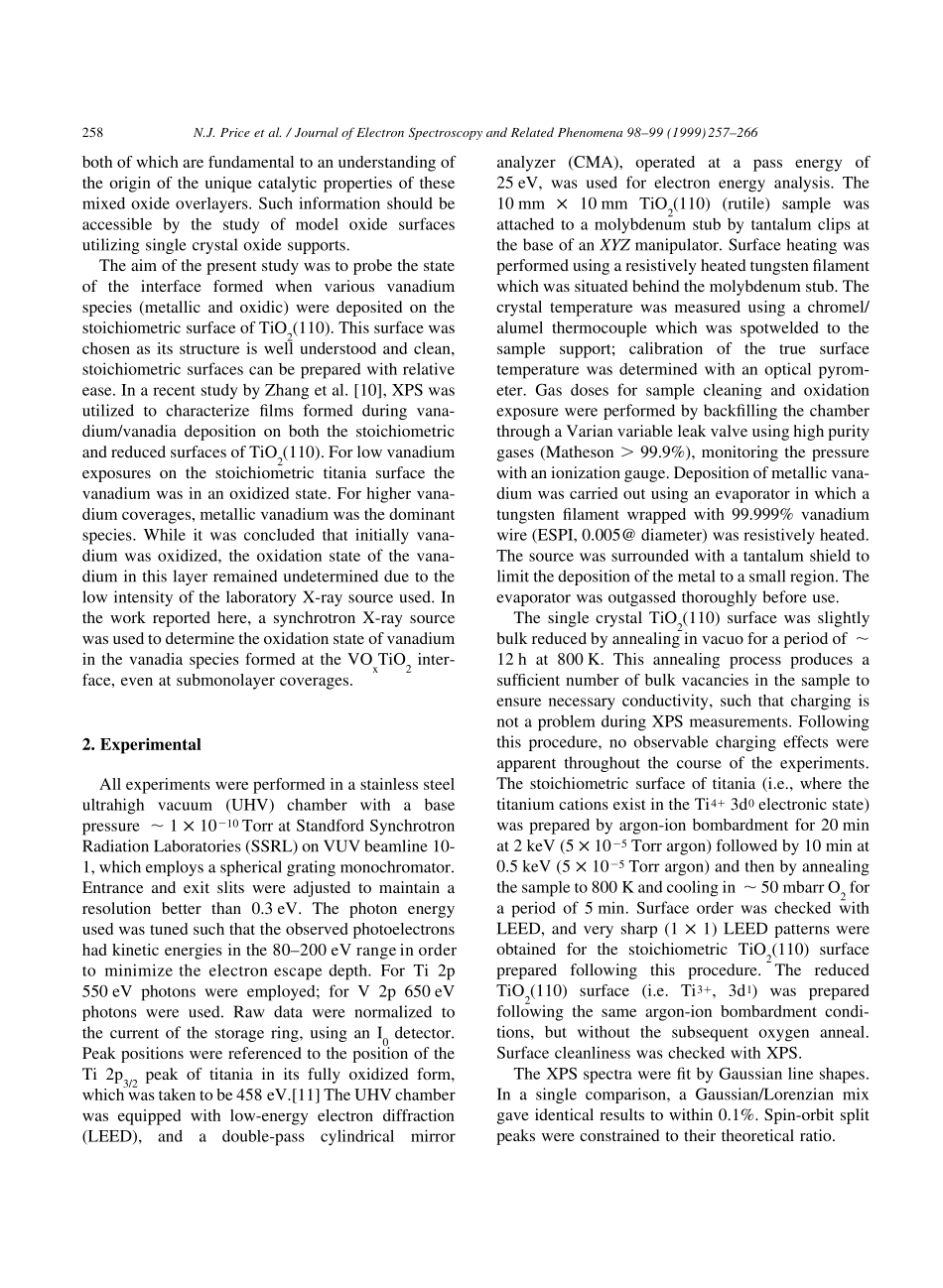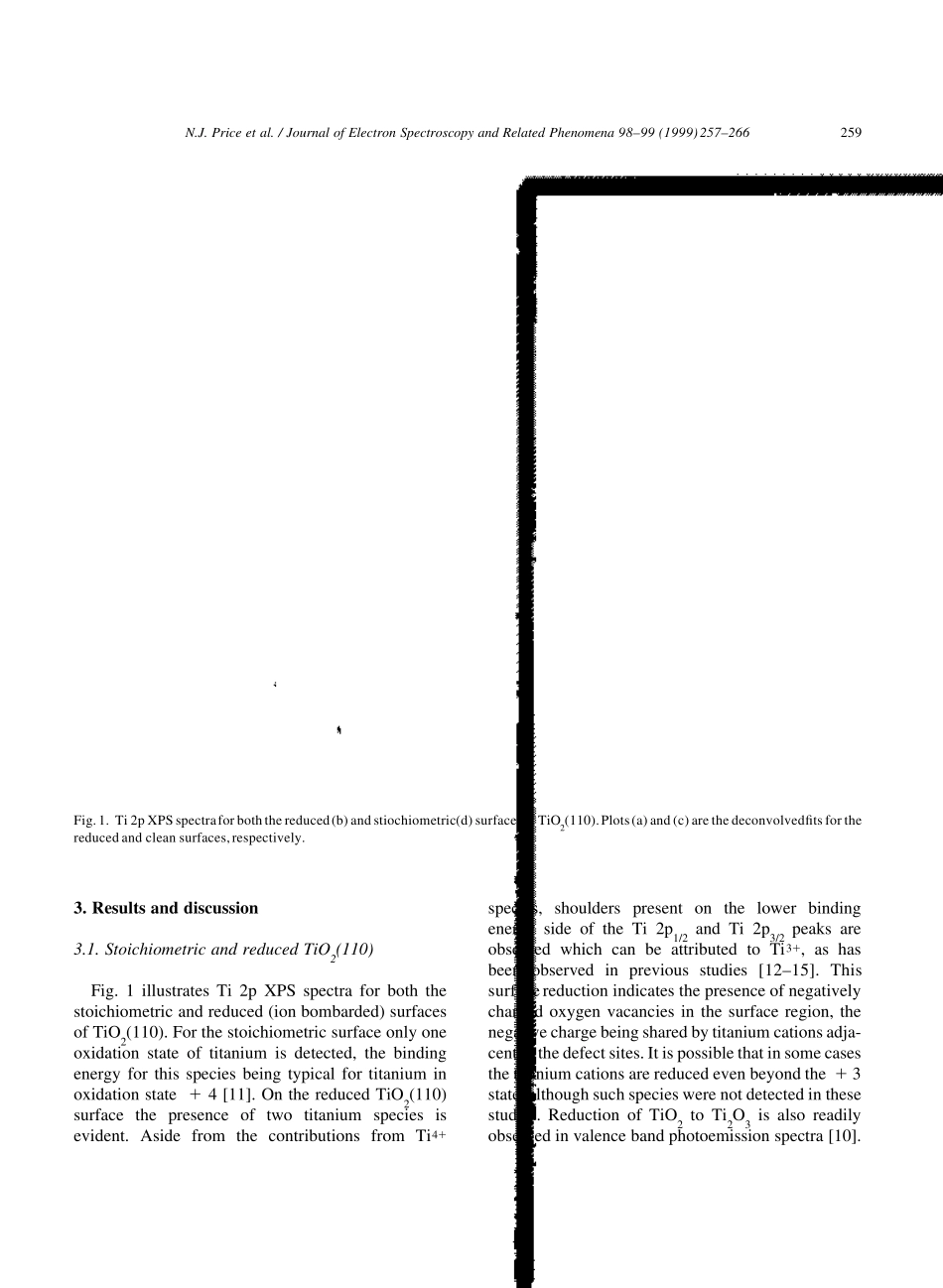A synchrotron XPS study of the vanadia–titania system as a modelfor monolayer oxide catalystsNicola J. Price1, John B. Reitz2, Robert J. Madix1,2,*, E.I. Solomon2aDepartmentof ChemicalEngineering,StandfordUniversity,Stanford,CA 94305, USAbDepartmentof Chemistry,StanfordUniversity, Stanford, CA 94305, USAReceived 16 December 1997; accepted 23 June 1998AbstractThe deposition of vanadium metal onto stoichiometric TiO2(110) has been studied with photoelectron spectroscopy from lowto high coverages of vanadium. A synchrotron source was employed in XPS experiments for the study of submonolayercoverages of vanadium in order to determine the oxidation state of the vanadia species formed at submonolayer coverages.The exposure of the titania surface to vanadium metal results in charge-transfer from vanadium to titania at the interface. At lowdoses of the metal vigorous interaction between the metal and titania surface yields reduction of the Ti4ϩ species to Ti3ϩ at theinterface, as evidenced by both changes in the lineshape of the Ti 2p XPS spectra and Ti LIII-edge spectra. Concurrent with thissurface reduction vanadium metal is oxidized. At higher vanadium doses the vanadium 2p binding energy indicates theformation of metallic vanadium. When metallic vanadium deposition is followed by exposure of the surface to oxygen,only one vanadium species remains on the surface, the binding energy of which corresponds to that of the oxide presentinitially at low doses of vanadium metal. By comparison of the V 2p binding energies to those of bulk oxides, it appears that theoxidation state of the vanadium in the oxide species is ϩ 3, suggesting the formation of V2O3 on the surface. Vanadium LIII-edge data also suggest that V2O5 is not...


